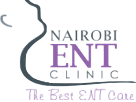Skin Rejuvenation; The Microdermabrasion Experience
What is microdermabrasion?
Microdermabrasion is a minimally-invasive exfoliation procedure used to superficially resurface the skin. Skin rejuvenation with exfoliation treatments is based on the principles of wound healing. By wounding and removing superficial skin layers in a controlled manner, cell renewal is stimulated, with regeneration of a healthier epidermis and dermis.
How does it work?
Microdermabrasion is a minimally invasive cosmetic procedure consisting of two components: an abrasive component and a vacuum component. An inert crystal like aluminium oxide or sodium chloride is accelerated from the handpiece toward the skin. The interaction between the skin and crystals creates a gentle mechanical abrasion that removes the superficial layers of the skin. The spent crystals and skin debris are then collected by the vacuum and deposited in a waste receptacle
What can microdermabrasion do?
Microdermabrasion can:
- Improve age spots and black heads
- Improve hyperpigmentation (patches of darkened skin)
- Exfoliate your skin, resulting in a refreshed appearance
- Lessen the appearance of stretch marks.
- Reduce fine lines and wrinkles
- Reduce or eliminate enlarged pores
- Treat acne and the scars left by acne
Am I a candidate for microdermabrasion?
You may be a good candidate for microdermabrasion if you:
- Are physically healthy
- Don’t smoke
- Have a positive outlook and realistic goals in mind for the improvement of your appearance
- Are committed to maintaining good skin health
What can I expect?
The treatment will last about a half hour. You may feel a mild scratching as the procedure removes the superficial skin cells.
Additionally, you’ll notice a vibrating sensation akin to a massage. There is also a suction mechanism to lift off the dead skin
What is the recovery time?
Microdermabrasion is a minimally-invasive procedure so return to activity is immediate. This is a major advantage of the treatment.
What are the alternatives?
Depending on your skin type and particular concerns, combinations of treatment can be discussed. Each is unique and is best to discuss with your doctor on the treatment option that is designed specifically for you.
How many treatments shall I need?
Many people have two microdermabrasion treatments per month at first and then one per month as part of a maintenance plan.
What is the risk and safety profile of microdermabrasion?
Any discomfort experienced as part of microdermabrasion is usually short-lived. This can include redness and swelling, which should subside within a few hours. Later, you can expect the skin to be flaky and dry for several days.
Additional microdermabrasion risks include:
- Bruising, which can occur from the suction and may last several days.
- Your skin will be more sensitive to sun exposure. Be sure to use sunscreen, especially immediately following a microdermabrasion session.
Disclaimer
The content on the Nairobi ENT website is not intended nor recommended as a substitute for medical advice, diagnosis, or treatment. Always seek the advice of your own physician or other qualified health care professional regarding any medical questions or conditions.
References
- Small, Rebecca. “Aesthetic procedures in office practice.” Am Fam Physician 80.11 (2009): 1231-7.
- Meaike, Jesse D., et al. “Noninvasive Facial Rejuvenation. Part 3: Physician-Directed—Lasers, Chemical Peels, and Other Noninvasive Modalities.” Seminars in plastic surgery. Vol. 30. No. 03. Thieme Medical Publishers, 2016.

